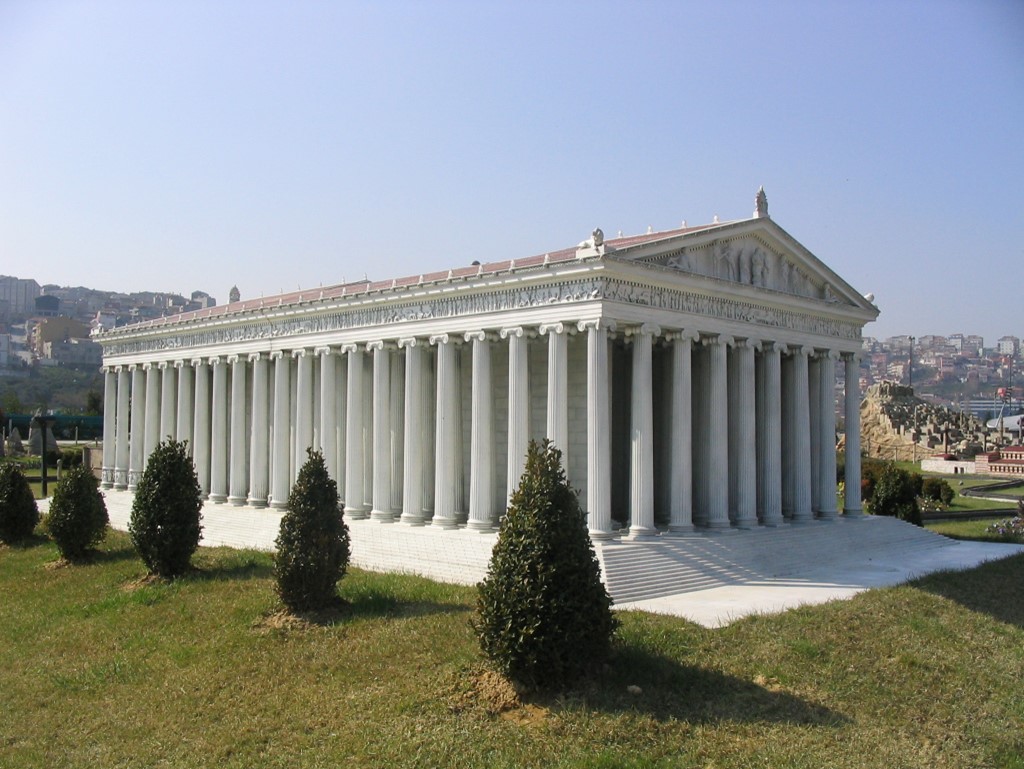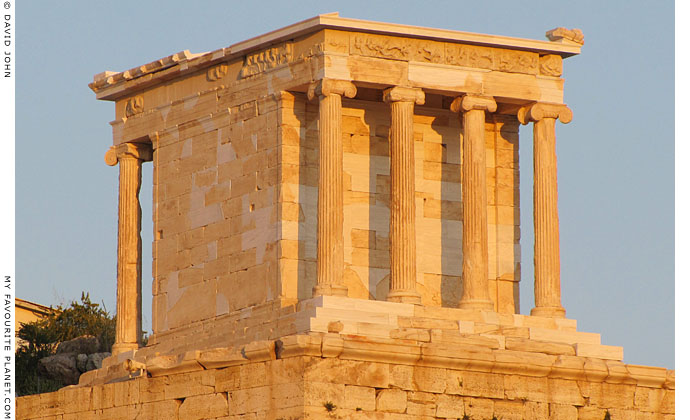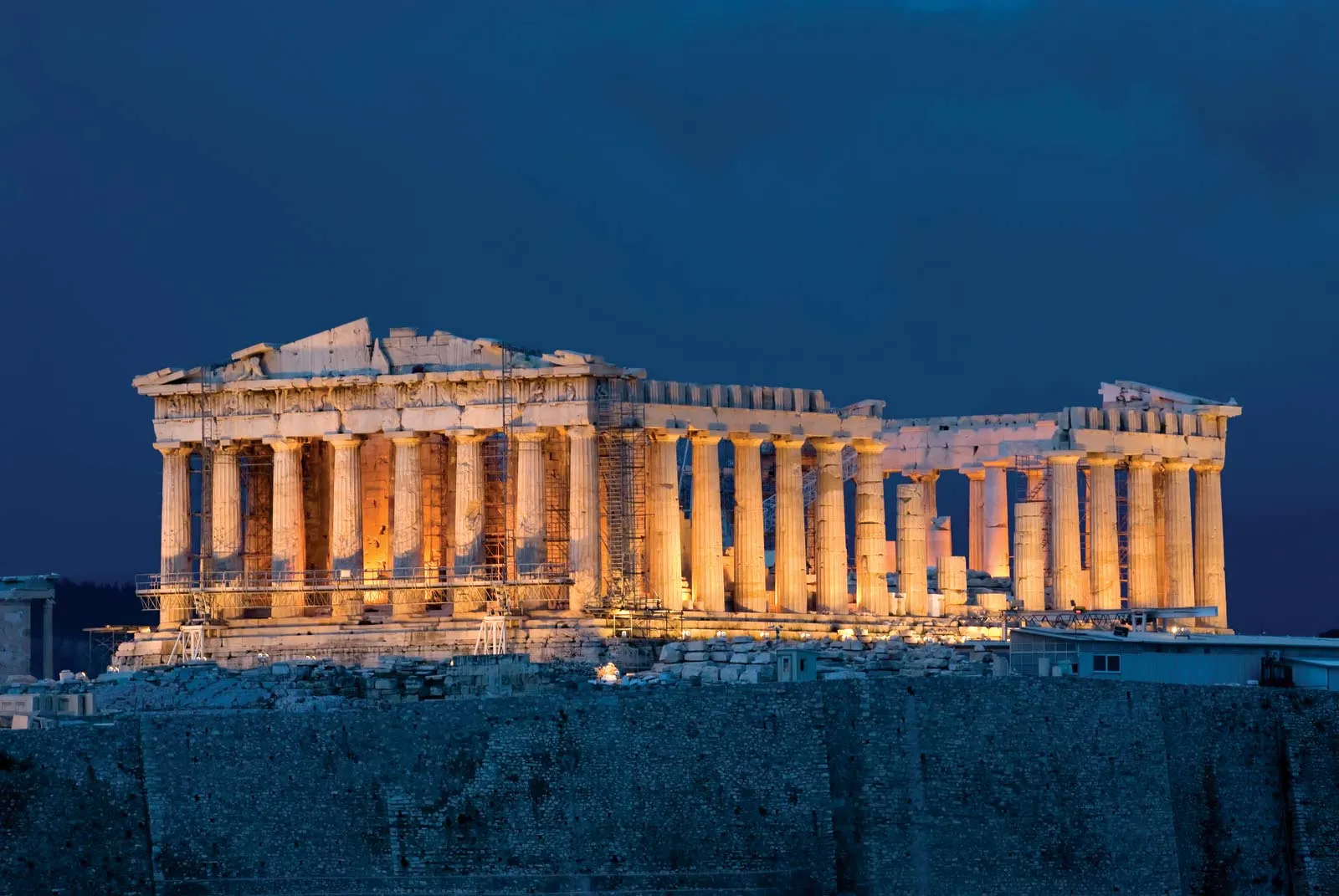History
The Ionic order is the second of the Greek orders, finding its roots in Ionia, a coastal region of what is modern day Turkey during the middle of 6th century B.C.E. before making it to mainland Greece in the 5th century B.C.E. The Ionic column’s most recognizable feature is its capital, which contains 4 volutes, or spiral, scroll like decorations. The origin of the scroll design is unclear, with some theorizing it draws inspiration from the curve of a ram’s horn or from the flow of a woman’s hair. Ionic columns can be plain, but still more often than not will have a fluted design. Ionic columns contain 24 flutes that have a flat space between each one, as opposed to Doric’s 24 flutes that come to an arris point. These columns do also include a base made up of a square plinth and 2-rounded torus’, this style is called an Attic base. As mentioned in last week’s post, the Doric order was referred to by Vitruvius as the “masculine order,” the Ionic order is described as its counterpart, the “feminine order.”
If you are interested in getting Ionic Columns of your own, you can shop ours here, or design your own column and a product specialist will contact you to find the perfect solution for your project!
Ionic Column Sizing
Intended to be more “feminine” than Doric columns, Ionic columns call for a more slender proportion. Historically having a diameter to height ratio of 8-9 column diameters. The Ionic column was also popular in Antebellum homes in American Greek Revival architecture, and in those instances have even more slender proportions.
Example: If your column is 8’ tall, your diameter should be 10 ½” – 12”
Famous Examples
Prior to its destruction in 401, the Temple of Artemis in Ephesus was one of the most iconic structures of Ancient Greece, classified as one of the seven wonders of the ancient world. Having been destroyed and rebuilt 3 times, its final phase included 127 Ionic Columns, each standing 40’ in height. This description written by Greek poet Antipater of Sidon sums up its majesty:
“I have set eyes on the wall of lofty Babylon on which is a road for chariots, and the statue of Zeus by the Alpheus, and the hanging gardens, and the colossus of the sun and the huge labour of high pyramids, and the vast tomb of Mausolus; but when I saw the house of Artemis that mounted to the clouds, those other marvels lost their brilliancy, and I said Lo, apart from Olympus, the Sun never looked on aught so grand.”

The Erechtheion is a Temple of Athena located on the north side of the Acropolis built between 421 and 406 BC. It was first recorded in modern times in Julien-David LeRoy’s 1758 treatise The Ruins of the Most Beautiful Monuments of Greece.

The temple of Athena Nike was built around 420 BC and it was the first temple fully built in the Ionic Order located on the Acropolis. This temple contains 4 columns on the front facade and four more on the back, all in the Ionic style with a 7:1 ratio of height to diameter.

Sources


